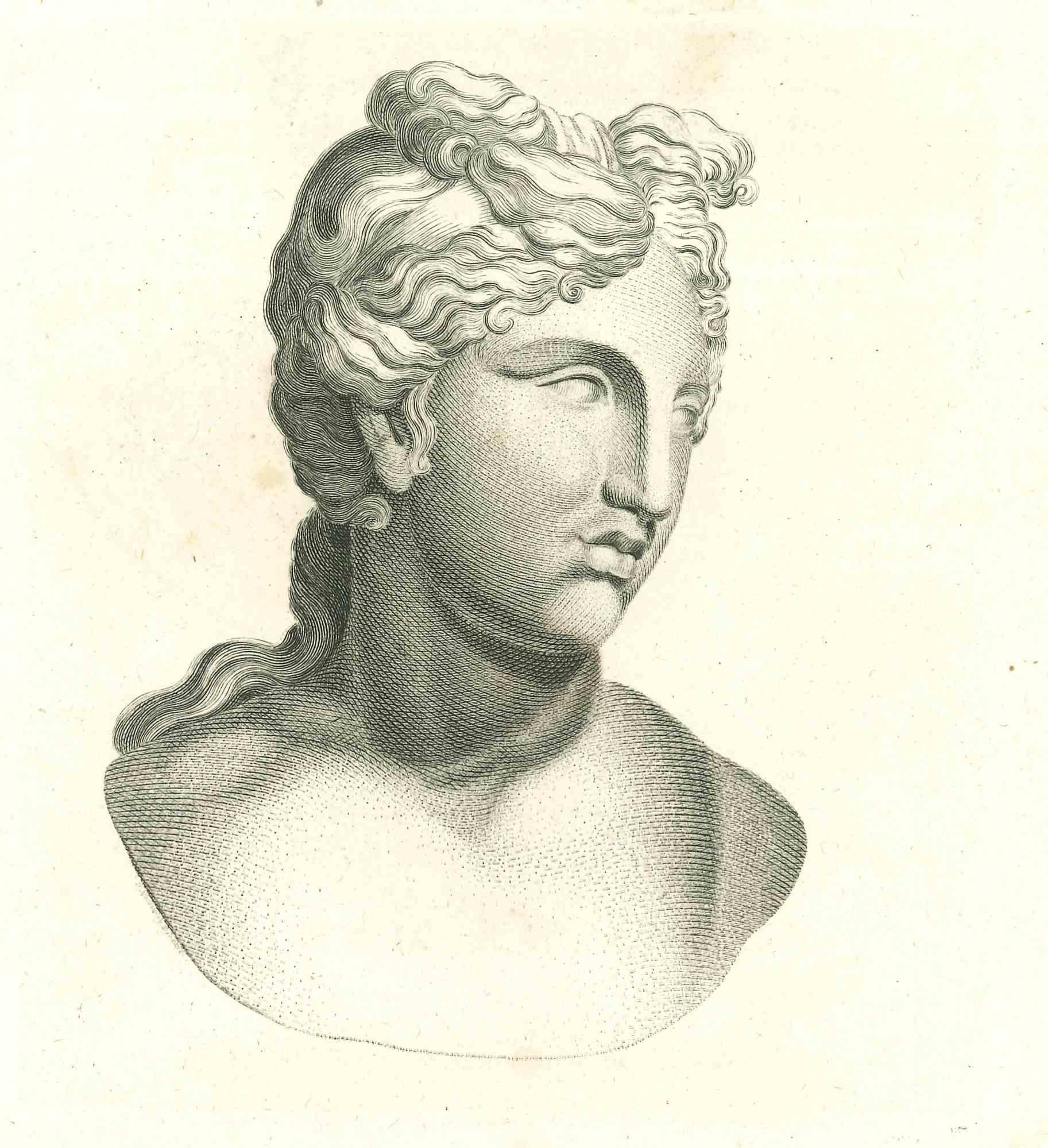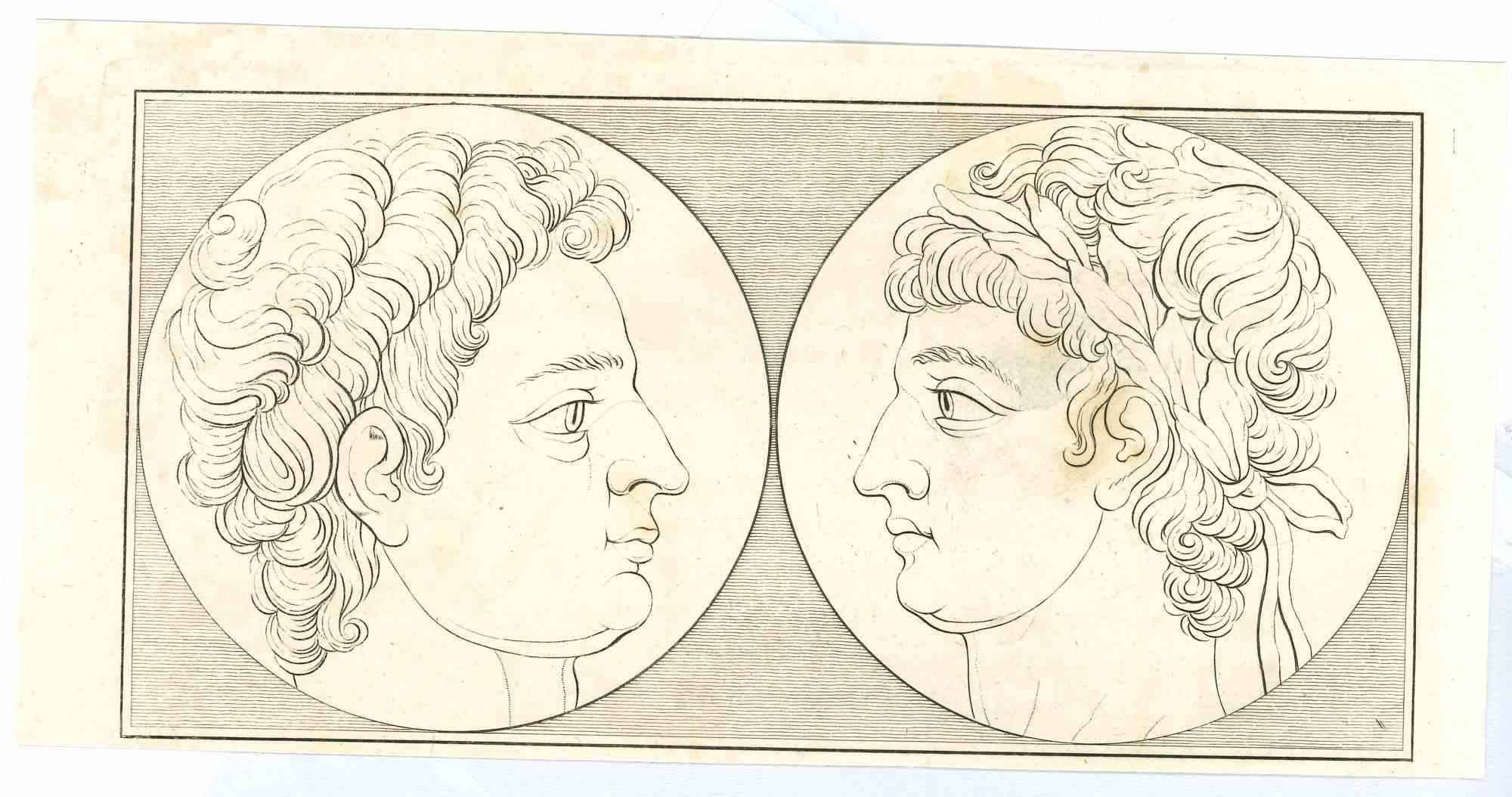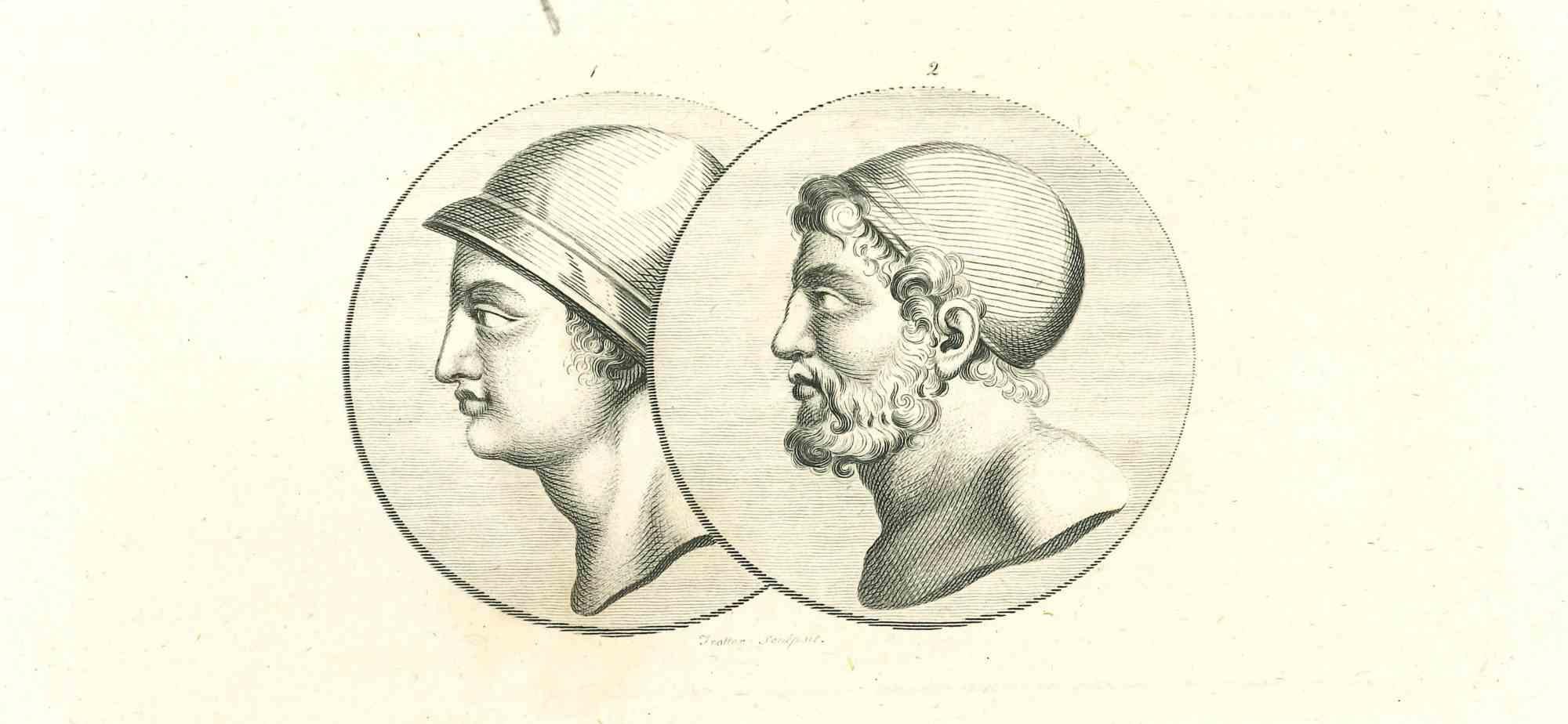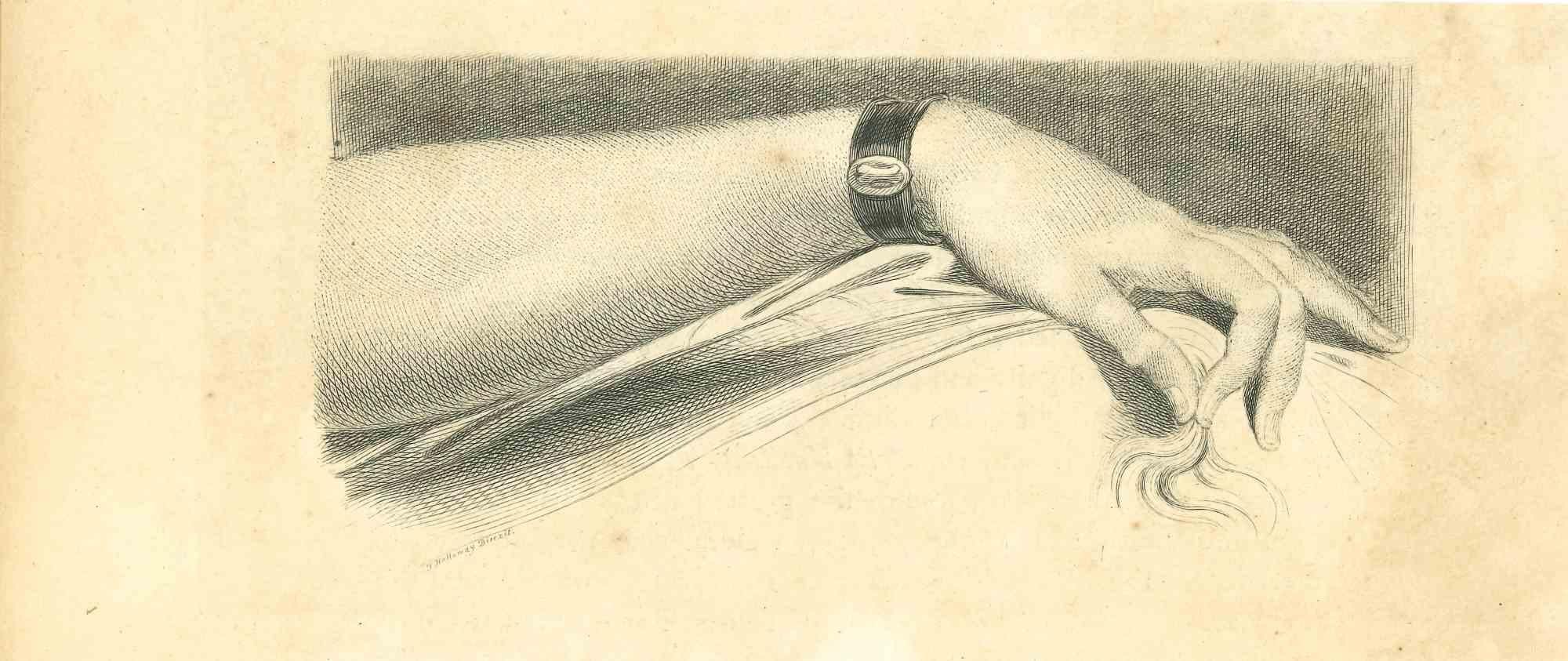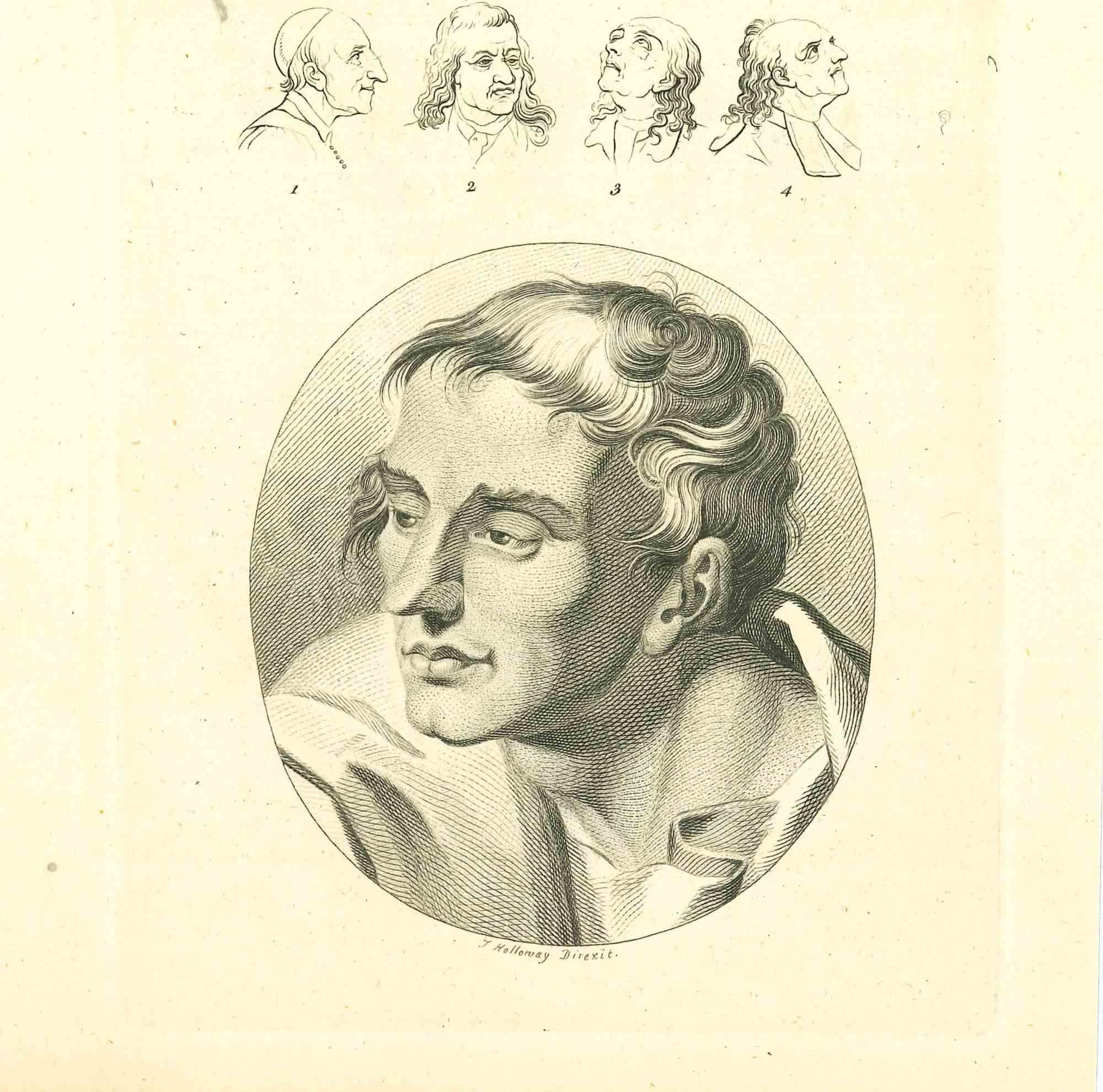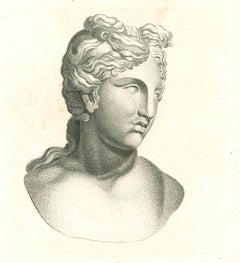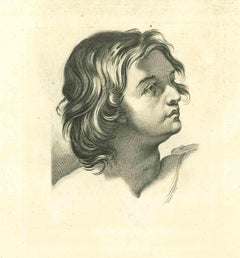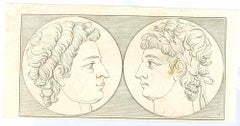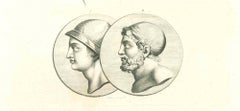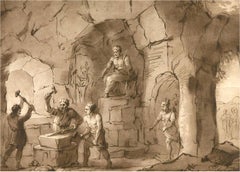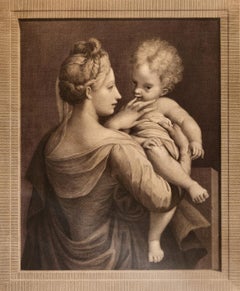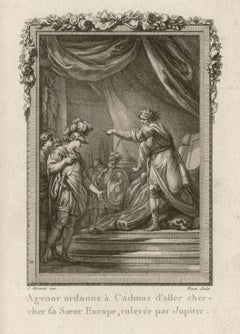Items Similar to The Physiognomy - Etching by Thomas Holloway - 1810
Want more images or videos?
Request additional images or videos from the seller
1 of 2
Thomas HollowayThe Physiognomy - Etching by Thomas Holloway - 18101810
1810
$354.63
£267.88
€300
CA$497.77
A$542.91
CHF 285.46
MX$6,515.19
NOK 3,604.22
SEK 3,361.76
DKK 2,285.37
About the Item
The Physiognomy - The Rest By The Three is an original etching artwork realized by Thomas Holloway for Johann Caspar Lavater's "Essays on Physiognomy, Designed to Promote the Knowledge and the Love of Mankind", London, Bensley, 1810.
Signed on the plate on the lower left.
With the script on the rear.
Good conditions with minor diffused stain.
Johann Caspar Lavater was a swiss theologian and philosopher known throughout Europe for his studies on physiognomy. Following the physiognomy tradition of Della Porta and of many Renaissance and Baroque philosophers, he believed that the character of a person could be elucidated through examining their “lines of countenance" i.e. tracing a profile outline portrait. Being able to "read outside" was the key to "know the inside". Lavater's thought largely influenced Art in the late 18th and early 19th century, as in the case of Johann Fuseli and William Blake (who realized two etchings for Lavater's English edition of his Essay).
Lavater was convinced that he could show his theories by analyzing the portraits of some of the main historical figures of the past, in some cases taken from paintings or (mainly for antiquity) sculptures. Some of the engravings in his volume, made by great masters of the time, are still considered today as graphic masterpieces.
- Creator:Thomas Holloway
- Creation Year:1810
- Dimensions:Height: 4.34 in (11 cm)Width: 5.91 in (15 cm)Depth: 0.04 in (1 mm)
- Medium:
- Movement & Style:
- Period:
- Framing:Framing Options Available
- Condition:Insurance may be requested by customers as additional service, contact us for more information.
- Gallery Location:Roma, IT
- Reference Number:Seller: T-1248031stDibs: LU65038943572
About the Seller
4.9
Platinum Seller
Premium sellers with a 4.7+ rating and 24-hour response times
1stDibs seller since 2017
7,827 sales on 1stDibs
Typical response time: 1 hour
- ShippingRetrieving quote...Shipping from: Monaco, Monaco
- Return Policy
More From This Seller
View AllThe Physiognomy - Etching by Thomas Holloway - 1810
Located in Roma, IT
The Physiognomy - The Woman Bust is an original etching artwork realized by Thomas Holloway for Johann Caspar Lavater's "Essays on Physiognomy, Designed to Promote the Knowledge and ...
Category
1810s Modern Figurative Prints
Materials
Etching
The Physiognomy - Etching by Thomas Trotter - 1810
By Thomas Trotter
Located in Roma, IT
The Portrait is an original etching artwork realized by Thomas Trotter for Johann Caspar Lavater's "Essays on Physiognomy, Designed to Promote the Knowledge and the Love of Mankind",...
Category
1810s Modern Figurative Prints
Materials
Etching
The Physiognomy - Etching by Thomas Holloway - 1810
Located in Roma, IT
The Physiognomy - The Two Profiles is an original etching artwork realized by Thomas Holloway for Johann Caspar Lavater's "Essays on Physiognomy, Designed to Promote the Knowledge an...
Category
1810s Modern Figurative Prints
Materials
Etching
The Physiognomy - Etching by Thomas Holloway - 1810
Located in Roma, IT
The Physiognomy - Two Profiles is an original etching artwork realized by Thomas Holloway for Johann Caspar Lavater's "Essays on Physiognomy, Designed to Promote the Knowledge and th...
Category
1810s Modern Figurative Prints
Materials
Etching
The Physiognomy - The Hand - Original Etching by Thomas Holloway - 1810
By Thomas Holloway
Located in Roma, IT
The Physiognomy - The Hand is an original etching artwork realized by Thomas Holloway for Johann Caspar Lavater's "Essays on Physiognomy, Designed to Promote the Knowledge and the Lo...
Category
1810s Modern Figurative Prints
Materials
Etching
The Physiognomy - The Faces - Original Etching by Thomas Holloway - 1810
By Thomas Holloway
Located in Roma, IT
The physiognomy - The faces is an original etching artwork realized by Thomas Holloway for Johann Caspar Lavater's "Essays on Physiognomy, Designed to Promote the Knowledge and the L...
Category
1810s Modern Figurative Prints
Materials
Etching
You May Also Like
Richard Earlom after Lorrain - 1802 Etching, Liber Vertatis Landscape No. 7
Located in Corsham, GB
A fine example of the 1802 strike of Landscape No. 7 from the etched version of the Liber Vertatis. Sculptured by Richard Earlom (1743-1822) after the original from the book by Claud...
Category
19th Century Interior Prints
Materials
Etching
William Hogarth . Original engravings 155 pсs., 1 piece with blend. 1822 London
By William Hogarth
Located in Riga, LV
William Hogarth (1697-1764)
Original engravings 155 pсs., 1 piece with blend. 1822 London
From A. Neibergs collection
Category
1820s Realist Figurative Prints
Materials
Paper, Engraving
Parmigiani Amica: An 18th Century Engraving and Etching by Strange After Mazzola
Located in Alamo, CA
This is an 18th century engraving and etching entitled "Parmigiani Amica" by Robert Strange after a painting by Girolamo Francesco Maria Mazzola, better known as Parmigianino, who lived during the Renaissance period. It was published in London in 1774. As the inscription states, the painting was in the collection of the King of Naples at the time the engraving was made. The engraving depicts a half-length portrait of a young woman, known as Parmigiani's Amica (meaning "female friend" in Italian). She is depicted wearing a simple but elegant dress with a low-cut neckline, which reveals her delicate features and graceful neck. Her hair is arranged in a simple yet stylish manner. She is turning to the right to look lovingly at her infant, which she is holding with her right arm. She is touching the baby's mouth with her left hand. The background of the engraving is plain and unadorned, allowing the viewer to focus entirely on the subject of the portrait. The result is a beautiful and timeless image that captures the essence of Renaissance portraiture.
The engraving is printed on watermarked paper. The sheet measures 16.25" high and 12' wide. The sheet is adhered to paper in its upper corners and it has been removed from the paper in its lower corners. There is some mild discoloration and some wrinkling in the margins, including the lower inscription area, and a small dark spot in the upper margin, which may represent a drop of ink occuring at the time of printing. These issues do not involve the image, which is in very good condition. The print is held by several museums and institutions, including: The Metropolitan Museum of Art in New York, The British Museum in London, The Royal Museums of the UK, The British National Trust...
Category
Late 18th Century Portrait Prints
Materials
Engraving, Etching
$1,500 Sale Price
20% Off
Agenor and Cadmus, Ovid's Metamorphoses, French Classical engraving, 1768
By Binet after Charles Monnet (1732-1808)
Located in Melbourne, Victoria
Copper-line engraving by Binet after Charles Monnet (1732-1808).
Agenor tells Cadmus to go and look for his sister Europae.
From 'Les Metamorphoses d'...
Category
Mid-18th Century Naturalistic Figurative Prints
Materials
Engraving
Theseus and Achelous, Ovid's Metamorphoses, French Classical engraving, 1768
Located in Melbourne, Victoria
Copper-line engraving by Massard after Charles Monnet (1732-1808).
Theseus returns from the Calydonian hunt and is met by the river god Achelous.
From...
Category
Mid-18th Century Naturalistic Figurative Prints
Materials
Engraving
Johann Christian Reinhart (1761-1847) - 1807 Engraving, Balaam's Donkey
Located in Corsham, GB
A fine early 19th Century engraving, showing the Biblical scene of Balaam's Donkey. The artist has inscribed their name and date in plate at the lower edge, along with an inscription...
Category
Early 19th Century Landscape Prints
Materials
Engraving
More Ways To Browse
Ron Agam
Rugby Poster
Salisbury Cathedral
Sarah Brookes
Secretariat Art
Shakespeare Sonnets
Ski Hat
Small Dog Painting
Tyrol Poster
Used Water Slides
Vintage Caribbean Travel Posters
Vintage Harley Prints
Vintage Nuclear Posters
Vintage Posters Amsterdam
Vintage Posters Portugal
Vintage School Bag
Vintage Wanted Posters
Warhol Leo Castelli
